:quality(80)/business-review.eu/wp-content/uploads/2018/11/BR-Smart-City.jpg)
Business Review wishes to support and highlight the evolution of the urban space, with everything encompassed by it: from technology, transportation, digital transformation, communities, architecture, to sustainability, passionate leadership and culture. Smart Future proposes greener, smarter and more connected future cities through panel discussions, debates and predictions about public–private collaborations, innovative and inspiring projects and ways of integrating new technologies, such as AI (artificial intelligence) and IoT (The internet of things) in the everyday life.
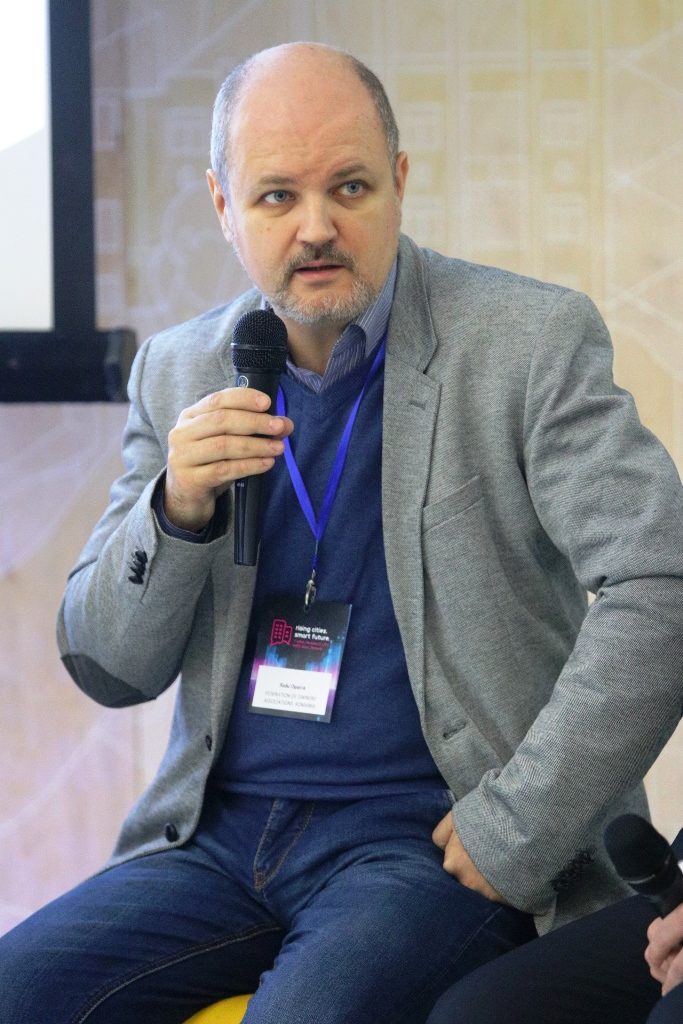
Radu Opaina, Founder at Federation of Owners Associations:
Our goal here is to find solutions for normality. After 20 years of activity I can tell you that the situation in Bucharest is terrible – all the infrastructure for utilities is in a very bad state. We have 300,000 people in Bucharest who do not have heating.
Authorities have made people addicted to the City Hall, which is not normal. The owner must be left to understand what it means to own, but they now have expectations from others to do the right thing. This is how we’re all educated.
In civilized countries, when you say new that means something actually new, better, more beautiful. The new apartment blocks are worse-looking than the old ones, and they have smaller apartments than the old ones, they are built at lower quality. There are fires and the firefighters can not get out of the fire. It’s an involution we’re witnessing.
When we have a private system, people will understand the mechanisms of the market and things will normalize.
I do not want to continue like that, but from what we see it will be even worse. If there is a damage to Mihai Bravu, 300,000 blocks have no water. Many can be left without water, without heat, without electricity due to the infrastructure’s precariousness.

Adrian Racasan, CEO Netcity
What we have done so far has been to look at the problems and try to solve them. We also have problems with communications networks because in the past they have been chaotic, everybody has been doing whatever they wanted.
We are trying to turn that disadvantage into an advantage; Bucharest started from the bottom and we have been able to build a very good network from scratch, because we started later than developed countries.
Our network has nearly 1,500 km. There are more than 200,000 apartments in buildings connected to our infrastructure. I’ve also seen apartments selling on OLX mentioning they’re connected to Netcity, which means people already value the network.
Like Smart City, we still have work to do. We hope to have over 2,000 km in 2020 and over half of the apartments to be connected to the network. We will not stop until we cover the whole city.
To make it faster, we should evacuate the city to build the entire network.
We believe that NetCity development will connect all buildings to a low cost.
We are the leaders of a platform that other communications firms or TV providers can use. Basically, any company that invests in Bucharest will have that infrastructure, for Smart City projects.
80 percent of a city’s network is infrastructure, only the remaining 20 percent means services.
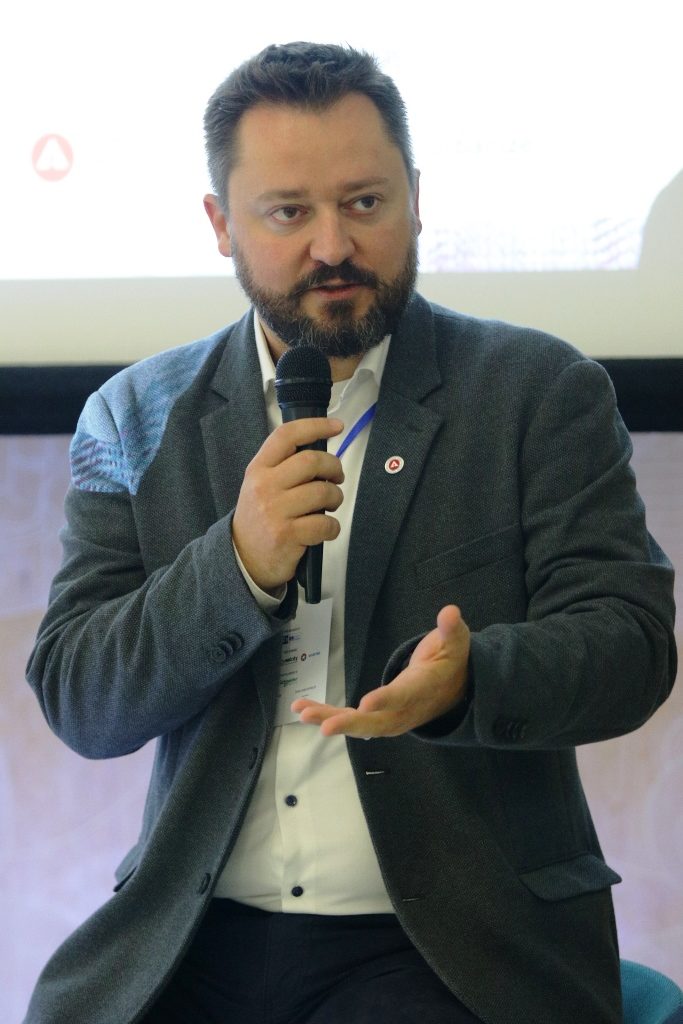
Lucian Gavozdea, President at Chamber of Architects in Romania
I think we also need to think about how we understand innovation, the process that drives inventions. Let us show that they are not only interested in collecting the data but that they become available to users who can use them in new ways, and this process will not happen if we do not have public policies to support such projects. Things do not happen on their own, we have to take action.
We have examples of Smart City in the country – Alba Iulia, Cluj Napoca, parts of Bucharest. But we need development at the local level that is supported by a national standardization, otherwise we develop in different ways and at some point we will not be able to integrate all the projects. A global vision is also needed.
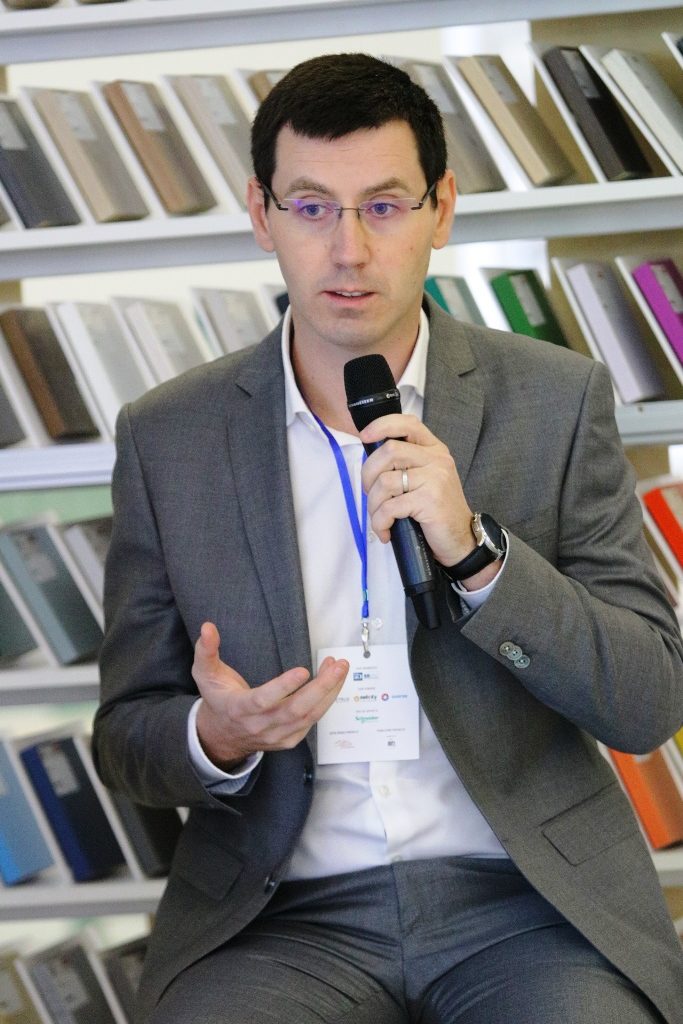
Razvan Nica, Managing Director, BuildGreen
Vehicle charging stations have been created and more has been done in this respect, but there is also a need for support from the authorities. There is no need for a revolution, but better organization at the local level and more support from the authorities.
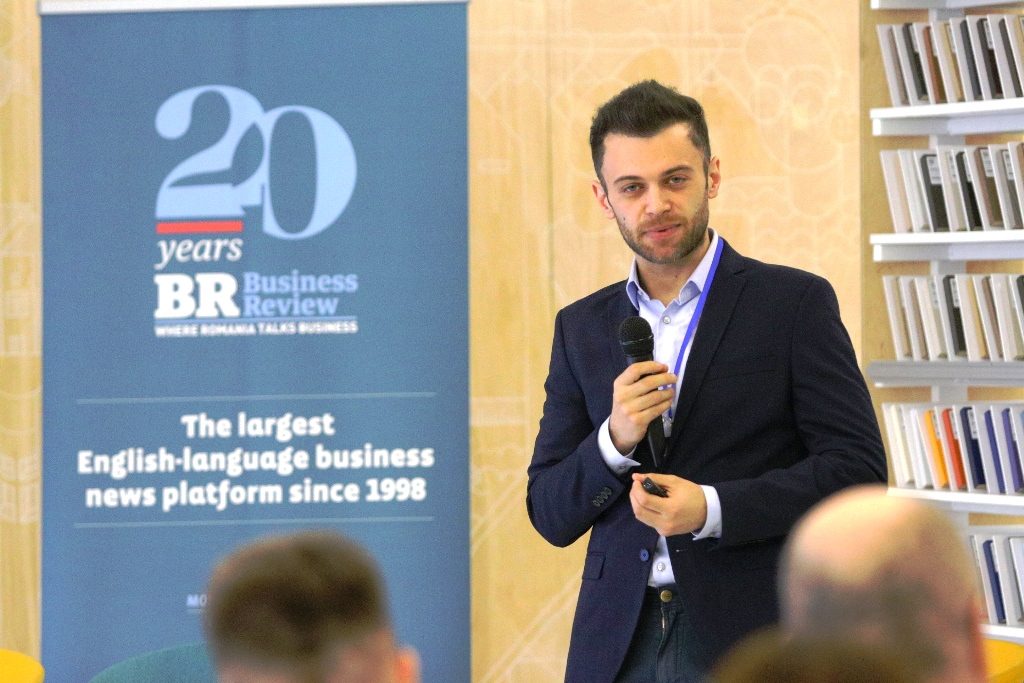
Marius Cristea, Senior Urban Development Specialist, World Bank Group
Smart City sounds good, but 10-15 percent of Bucharest has unpaved streets. The city is a living organism that grows and has its own dynamics and needs and we need to cover all of them.
We at the World Bank work mainly with institutions. For cities, we looked at local governments. All large cities have far greater productivity than small towns; this applies everywhere in the world including in Romania. That is why we were talking about metropolitanization, not urbanization.
We have counties with high urbanization, over 60 percent, like Timis and Cluj. Bucharest-Ilfov has a 100 percent degree of urbanization.
There is no dichotomy between the development of large cities and small towns. What we observe at the national level is that development focuses around large cities, it’s linked to the distance from big cities. They also have higher economic growth than the national average.
Romania has the most construction sites in Europe, you will not see so many in neighboring countries as Poland, Hungary or the Czech Republic.
Most people want to move to the city, but not everywhere. Most want to move to Cluj-Napoca, then Timsoara, Brasov, Constanta and Sibiu. They were chosen because they are beautiful cities in their view, they are the ones that look the best, the most western. They are willing to choose a city where they earn less than in Bucharest, but they have more green spaces. In the future, when people can work more from home, not from the office, these trends will be very important. Then come universities, where the best universities are.
70% of a city’s income is from the taxes paid by legal entities, not those paid by individuals, which is why we see that the cities where the business environment is developed have the ability to grow, and have revenue even when there will be no more European funds. A road can be paved from EU funds, but in 5 years it has to be rebuilt, it has to be maintained.
The quality of life will be the one that will make the difference between cities in the future. Many Romanians also leave because of the way they see the space around the block, as the city looks like.
If we look at what are now developed peripheral neighborhoods like Floresti in Cluj, we realize that there is a need to invest in them so they do not become ghettos.

Bogdan Popescu, Marketing & Operations Director, Microsoft Romania
A smart city is different, the response is a lot faster because you have the data in real time.
The journey map towards a Smart City starts with the Digital City. There are six areas for digitalization and all must be covered.
The capabilities should cover strategy and vision, then project and solutions, data, technology, skills and finally creating an ecosystem.
There are examples to be followed, like Helsinki, Finland or Beijing, China. We hope that in 5-10 years we will have a smart city in Bucharest as well.
You start with apps for everything, but then you integrate them. It is a matter of time. It is frustrating that things aren’t going at the speed we want them to, but we’re getting there.

Billal Vindhani, European Business Development Director at Honeywell
As an organization, Honeywell has transformed itself to become smart and green. We are able to start leveraging.
We invest in a variety of apps to make buildings smarter. We always carry a mobile phone with us, so why not use it to control a building? To book a parking space in advance, to interact with the facility and find what you need. The way we interact with the building has a great impact on our lives.
That is why we’ve developed platforms for that use. We can create analytics on how buildings are performing, if it is too hot or too cold. With predictive analytics we can solve any issues before they can have an impact on how the facility is performing.
There is a lot of data we can use in order to better use a facility.
It is about connecting people.
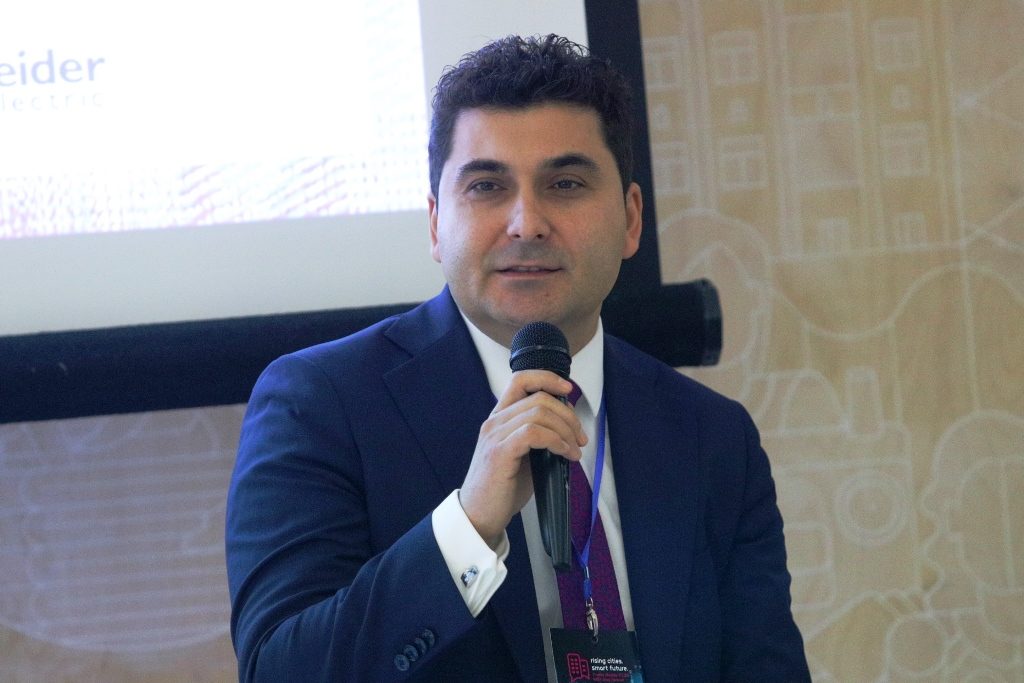
Sebastian Dragomir, Director, Office Advisory, Colliers International Romania
When you enter a building the first thing you notice is whether it has plants; this is a new trend, connecting with nature.
If we compare Bucharest with the big cities in the world… there is no comparison, it’s 2 million people versus 10-15 million.
When was the last time you saw butterflies in Bucharest? We need a new approach, work towards integration. Developers should take all this into consideration.
We have some very skilled people and I am talking about the IT people, working for these big companies, such as Microsoft and Honeywell, and so on, and these positions will definitely not be replaced by robots.
My job for instance, as a real estate consultant, may even be among the top 10 jobs that will be, in some cases, replaced by robots, except for the complex situations. In such cases, companies will make sure people will manage these needs. The robots may be able to use and solve basic daily business, but if you want something very specific, it is like going to a tailor. Tailors can provide you with a product that suits you perfectly, because they are more skilled than a robot, while the latter cannot do that.
I agree with something that I read in a publication: digital is not the cherry on the cake. It is the new cake. It is not a question about to AI or not to AI. We already have AI all around us.
That is the spirit, that is the plan. People need to learn new skills and adapt to the new paradigm. We have to deal with it, as it is the future.
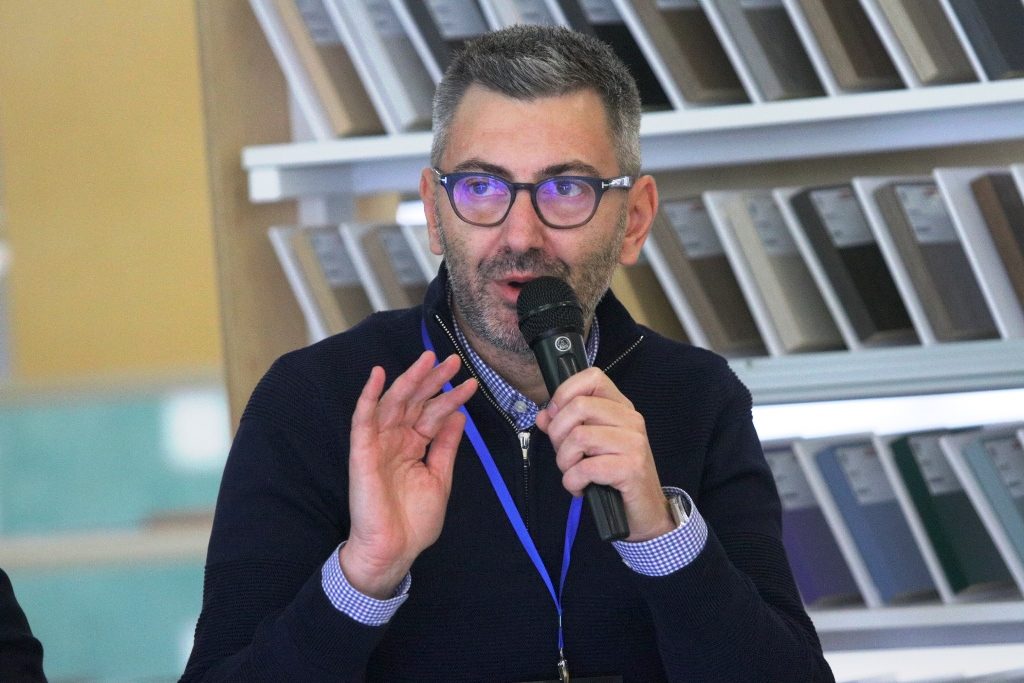
Demis Ghindeanu, Co-Founder and CEO at Pony Car Sharing
In Romania we started in 2015 and until then I had seen a lot of presentations from different people, who wanted to do a lot of things, but they didn’t manage to.
There are some important nuances in Romania. Many people talk, but few take action. It is very strange to talk about the integration of some applications in Romania etc. – I live in the real world, the Pony company is 100% digital, but we have some very simple problems. We talk about intelligent buildings, but when we go to them to talk about car sharing, they know nothing.
I always hear beautiful things, but nothing gets done. There are electric loading stations at office buildings, but they don’t really or they’re turned off after 9 pm. We’re trying to convince the City Hall in Cluj to let us pay for the parking without being on the spot, but we can’t, because legislation does not allow it.
Braila is now developing a smart city project, like Galati, Petrosani. How can you talk about smart city in a city with two traffic lights? Smart city is a city plan. We are very far away form that goal, in Romania, considering the reality we live in. Let’s not forget that the whole “online applications are submitted on the 2nd floor” thing is real. I do not think we have a more reliant institution in Romania than the City Hall.
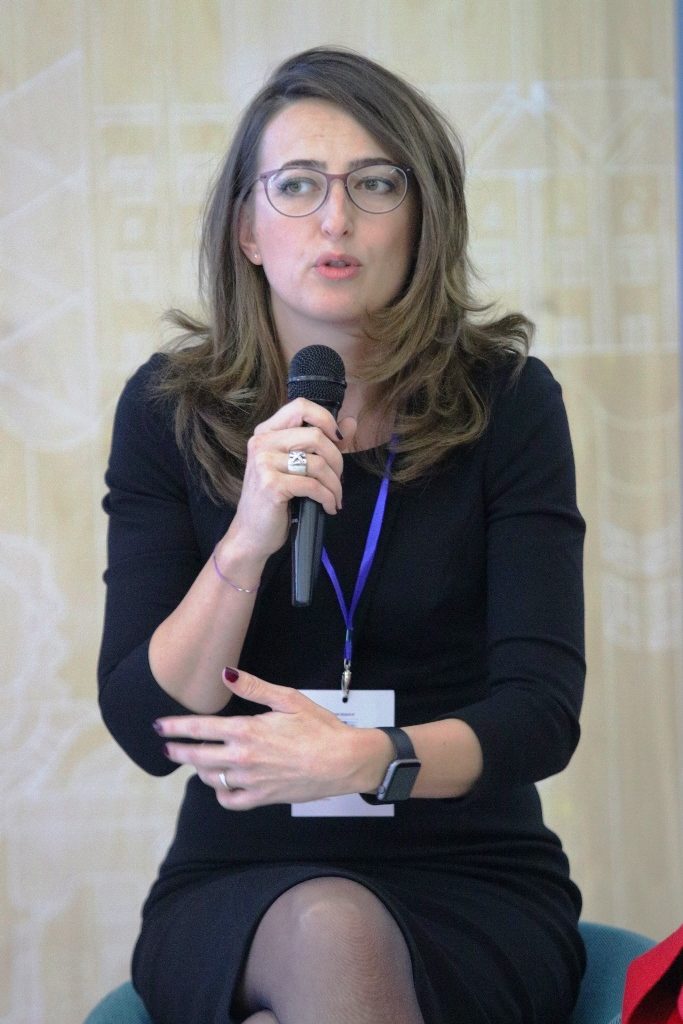
Raluca Crisan, Crountry Leader, Ceetrus Romania
The major tendency that we’re seeing today in the city is the need to connect. We are an example of a commercial center that, three years after opening, will become a community center. I asked people how this center should look. That’s how we created Drumul Taberelor. From neighborhood to community.
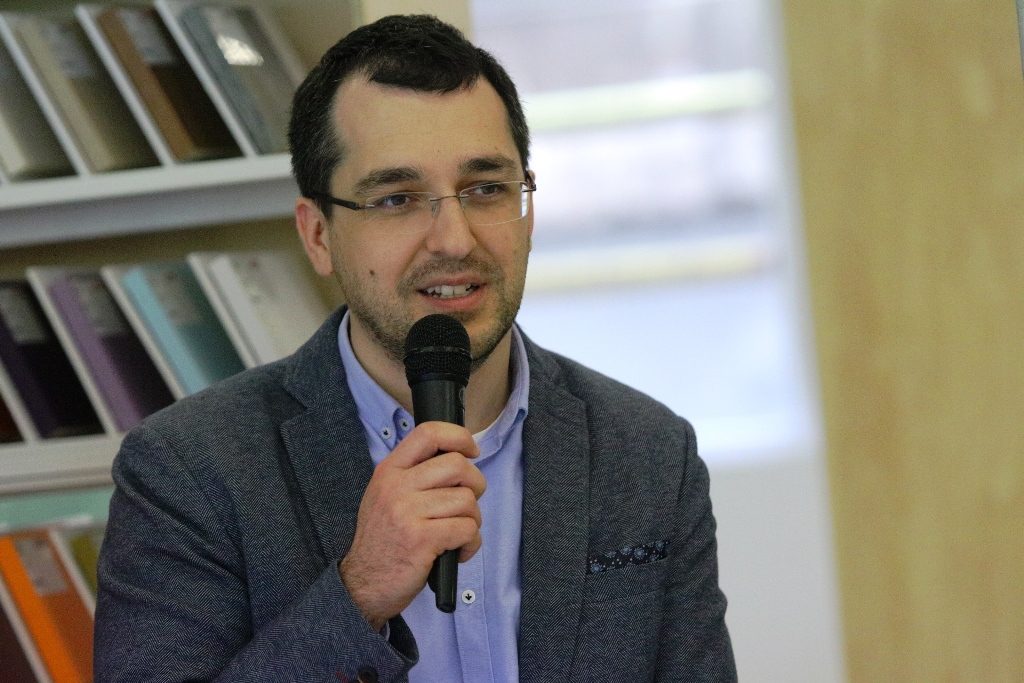
Vlad Voiculescu, former Health minister
What seems to be missing from Bucharest is a sentimental attachment. It’s hard to make long-term plans, so we do not bother to make plans like that. We spend a lot of time in traffic.
The sense of community doesn’t only come from smart solutions, but it is easier to communicate with their help. But there are also profoundly human things, like those we’ve discovered at Magic Camp. A community needs common values, and we have to discover and cultivate them.
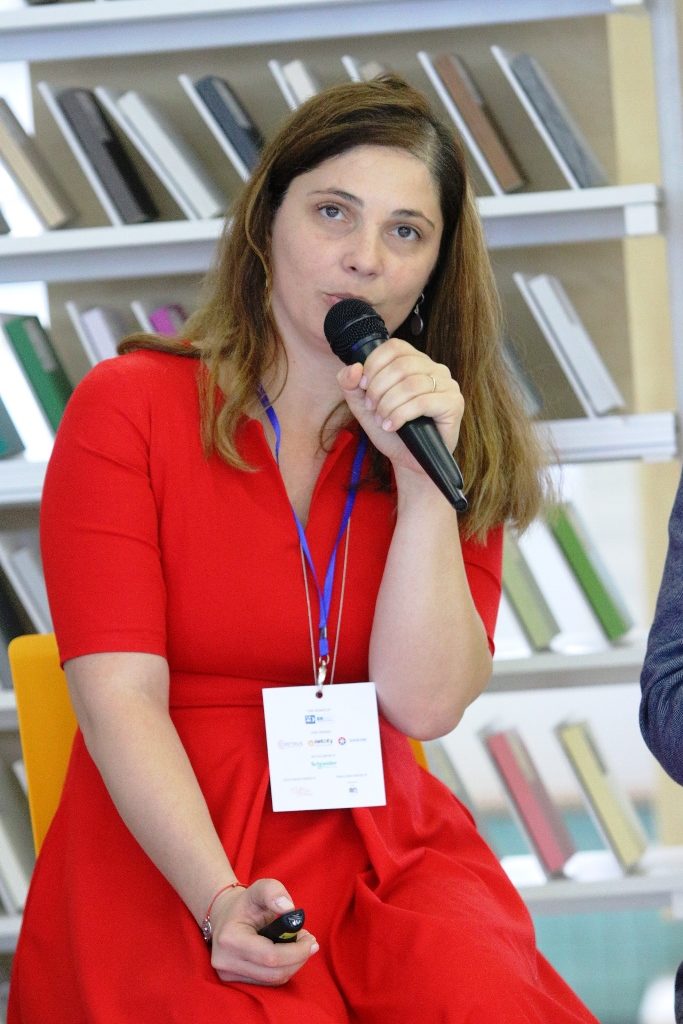
Alina Kasprovschi, Executive Director, Fundatia Comunitara Bucuresti
If there is something we have plenty of in Bucharest, it’s smart people. The people we are proud to present and praise for what they do for the projects they have carried out in the city.
They need resources, they need recognition and help. Because they are the ones who can transform the city or neighborhood into a community.
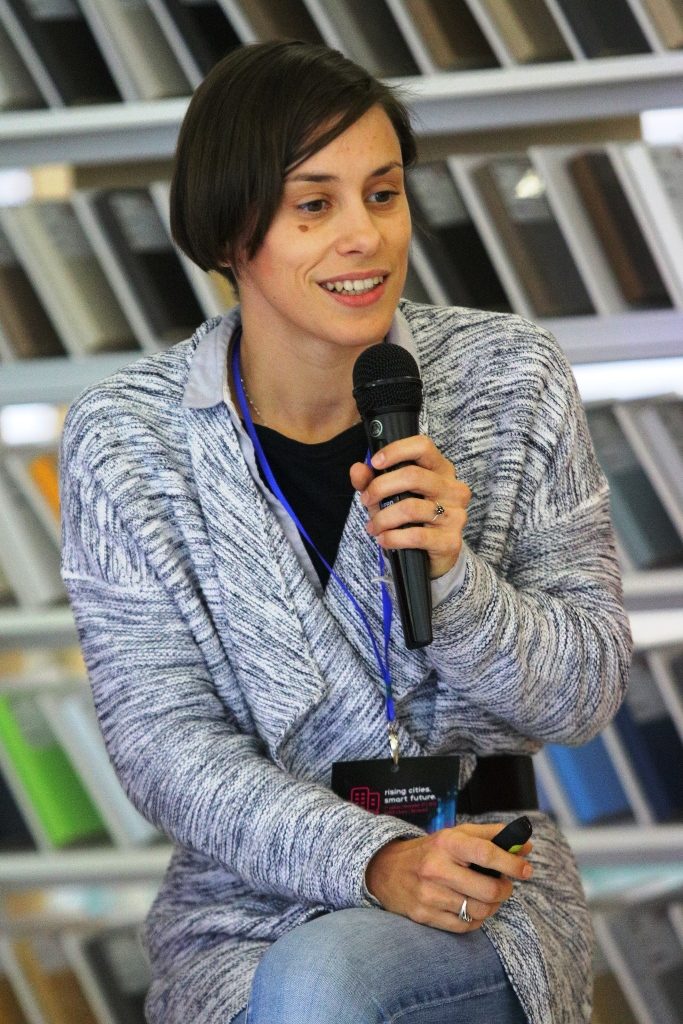
Tamina Lolev, Co-Founder NOD Makerspace
What we started 3 years ago is an urban regeneration by reusing space and bringing people to the same place.
Stage Makerspace was the first, but we continued the transformation of the building where we are with the Gastrobar, new co-working spaces. We had to take the rest of the space and create the materials library, a facility that should also exist in universities, to which we’ve added spatial events and another space for co-working.
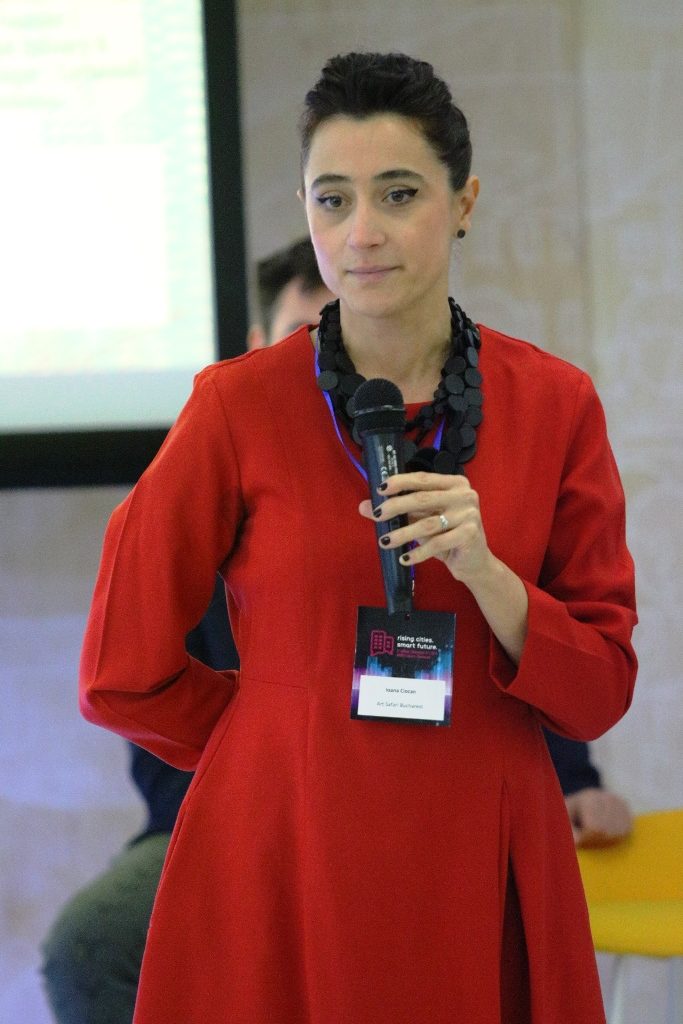
Ioana Ciocan, General Manager, Art Safari Bucharest
Our art pavilion began with stubbornness, involving the authorities. As we all do the work of the municipalities and other institutions, we decided to do the work of the museums. Because permanent exhibitions in museums should be changed, and not remain the same all the time.
We searched for an exhibition space, but wanted it to be in the heart of the city so that visitors could go somewhere else after they visit us, otherwise they wouldn’t come at all. That’s how we got to Ciclop in 2015. There we managed to hold Art Safari for the first time – 20,000 people visited the art exhibited in a garage. Then the building was returned, and since September 2015 the building has been closed, they haven’t done anything with it.
We decided to find other abandoned buildings and arrived at the former Antilopa shop on Lipscani. Oprescu bought the building and wanted to make Pinacoteca, but we ended up exposing new Art Safari there.
We spend 80 percent of the time trying to convince owners, either the City Hall or churches or others, and the rest of the time to make the space usable and exhibit artworks.
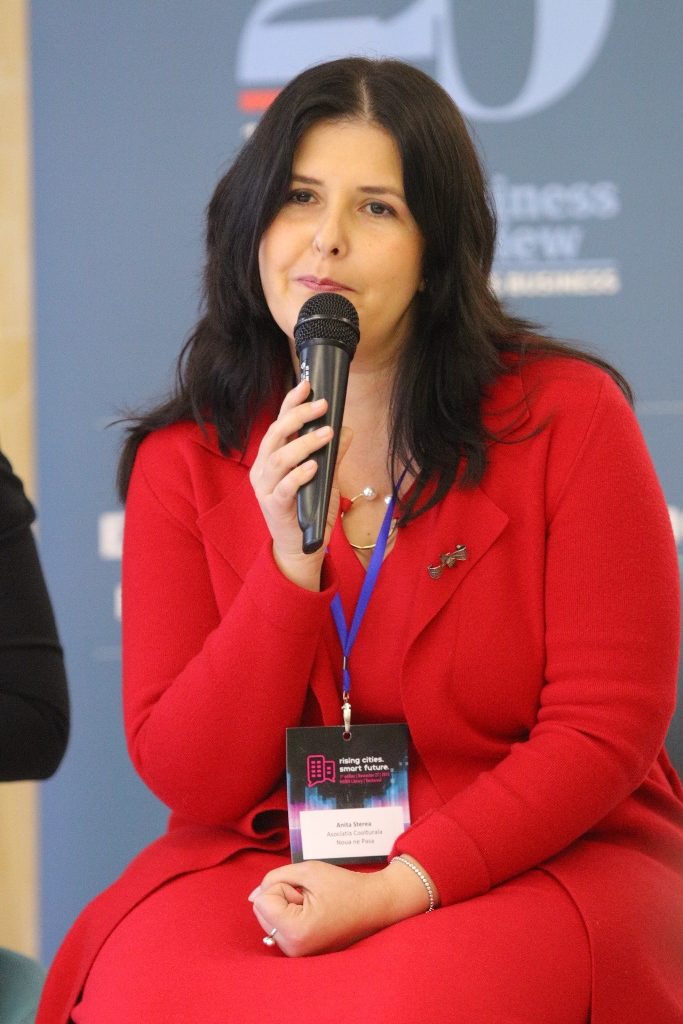
Anita Sterea, President, Asociatia Coolturala Noua ne pasa
Six years ago, we launched a program for foreign tourists to take them away from the Old Center and bring them to other places in the city, such as the Obor Square. We went to Obor daily during the summer and rarely during autumn and winter.
I am a historian, but those who come to see the city come to see it today, to see what it is like now. And we explain how all these things are done by people and by the community, not by the authorities.
There are people in the community, like a lady from the Armeneasca area, who invited us to her home for dessert and a coffee, without anything being arranged.

Cristian Neagoe, Co-Founder at Street Delivery & Manager at Carturesti Foundation
The car has stolen our streets from our feet and sell them back to us at the price of fuel. Car accidents cause more victims globally than anything else. And 3 percent of global GDP is lost due to these accidents. The car is also the largest polluter in a city.
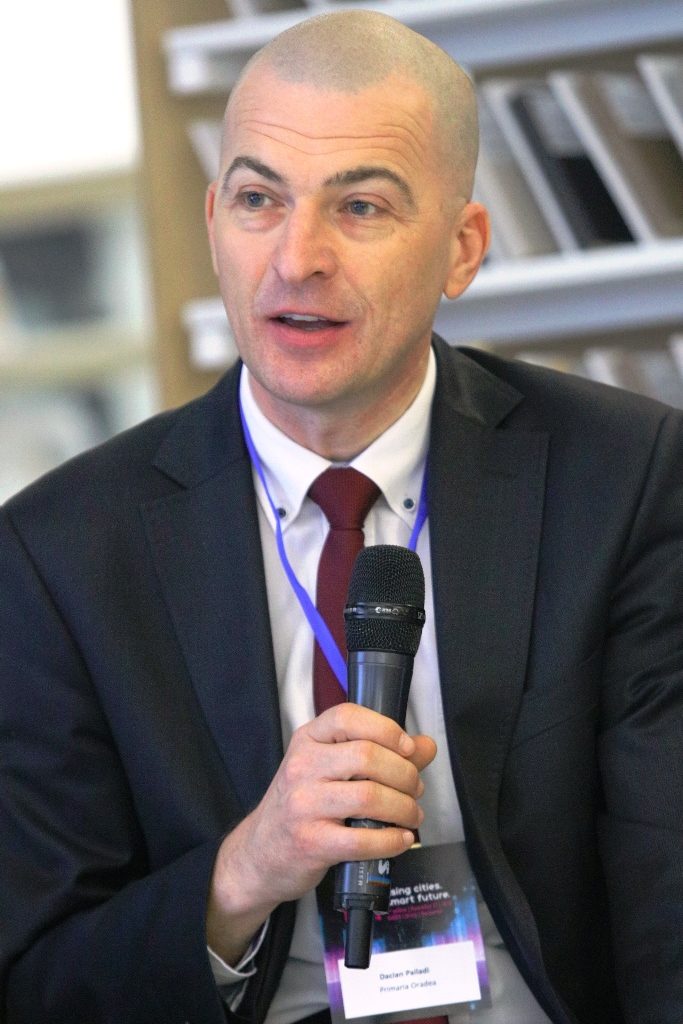
Dacian Paladi, City Manager Oradea
The administration of a city eventually can generate hope or dispair. Beyond theory, this is done on the street, not elsewhere. Depending on this, the quality of life also changes. People are … people. If we rebuild the facade of old buildings, they will feel much better. But the renovation of such facades costs at least EUR 50,000 and that is not cheap. And the owners ask for the City Hall to do it. 10 percent of them take out loans, about 20 percent do it with their money, and the rest have no money. We do the works and put the mortgage on the apartment or the house. But otherwise it cannot be done, and Oradea would look the same as the cities where nothing is happening.
But renovation has led to extraordinary restoration of local pride.
It is clear that the money of a small or medium town mayor’s office is not enough. By 2015 we pulled EUR 155 million and hoped to reach EUR 300 million from European funds. But how do you attract them? It’s not that easy? Good. 175,000 of the 200,000 people in the city are connected to the city’s centralized network. I managed to completely rebuild the thermal power plant with EUR 85 million. But European money cannot be used for anything people or cities may want, and here we have to be careful.
Oradea wants to continue doing what it does and not alone, but with others, hence the idea of a regional alliance with Timisoara, Arad and Cluj.
”Water, air, food, security and small bills”. These are the things to be done primarily by a local authority.
Smart City is a fashion now. For the time being, we have no answer as to how we will relate future technology to technology and which will be the best way to interact with it.

Marian Valerie Panait, City Manager Sinaia
We have a new center in Sinaia, we all boast, but there is a lot of work behind. 10 years ago we started talking to the community. Based on those meetings I made the first strategy. When the opportunity arose, we started filing projects for funds. The big project was Via Sinaia Green Open, with pedestrian zones, green, Wi-Fi, interaction elements. We attracted 29 million euros, one of the few projects without corrections from the European Commission.
How I said: In a construction site we have created ”Nicu”, who wrote a letter every week what was done, how many pipes were put in, even the negative ones. When the process was completed, we did not have to cut ribbons, people are asking, is it ready, can we call friends to see? It was a normal process.
We wanted integrated services, but we also had to find a way to communicate here. Including for the City Hall, where we created open spaces and a map showing where each department is.
About 3 years ago we passed our vision to the Prahova Valley. Two months ago we launched the first program called A Day at Sinaia, where everyone wants and shows their work and the city. There are many children in the surrounding villages that have never been to Sinaia.
I prefer to talk about people and community, not about Smart City and what the city does. We have won the Best City Sky Awards and it is enough to show what we are doing.
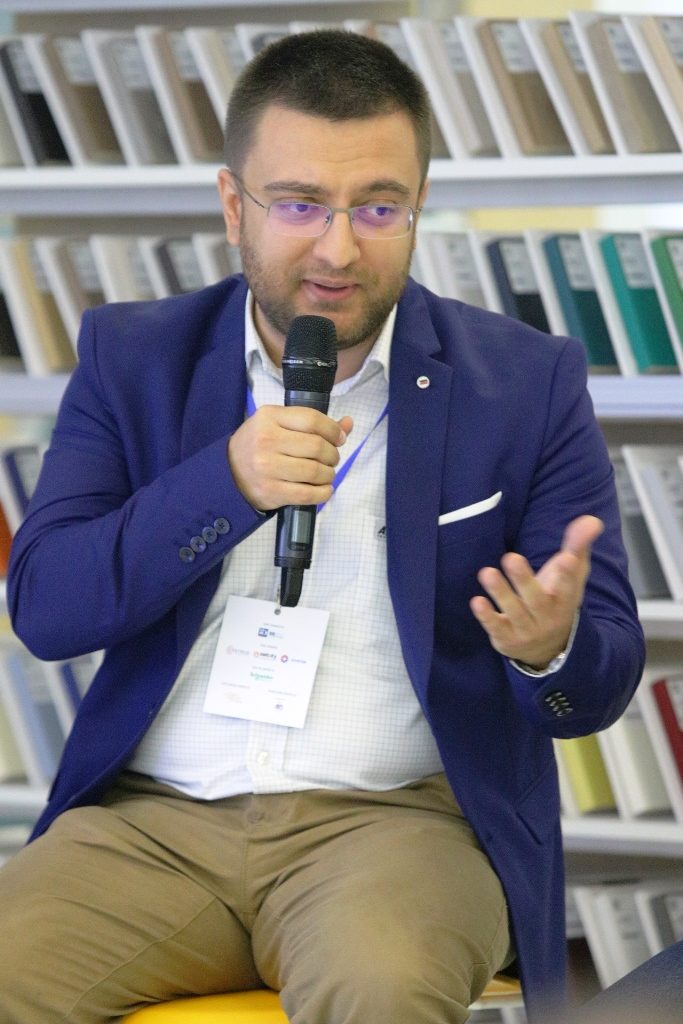
Bogdan Gavrila, Sales Engineer & trainer CEE Region Axis Communications
I can proudly say that we have almost 700 partners in Romania who can do projects alone, without our help. And I’m glad we can promote our country’s image through our products, we’ve had a lot of projects that do that.
On the technical side, we are working on two major components: Smart Security by Smart City. But we need to understand that everybody has every need, we do not do more than we need and no less. We have come to monitor what is happening in a city, including how polluted the city is. We can take Iasi as an example, where the pollution rates have jumped far above normal and we need to see what needs to be moved and where.
There is no Smart City solution that can be applied in a standardized manner. Everything needs customization, adapting to the needs of the particular city. We also had color changes in the rooms installed on the poles so that they fit into the architecture of the place and not stand out. We can do a lot already – we can quickly identify all people dressed in blue for example.
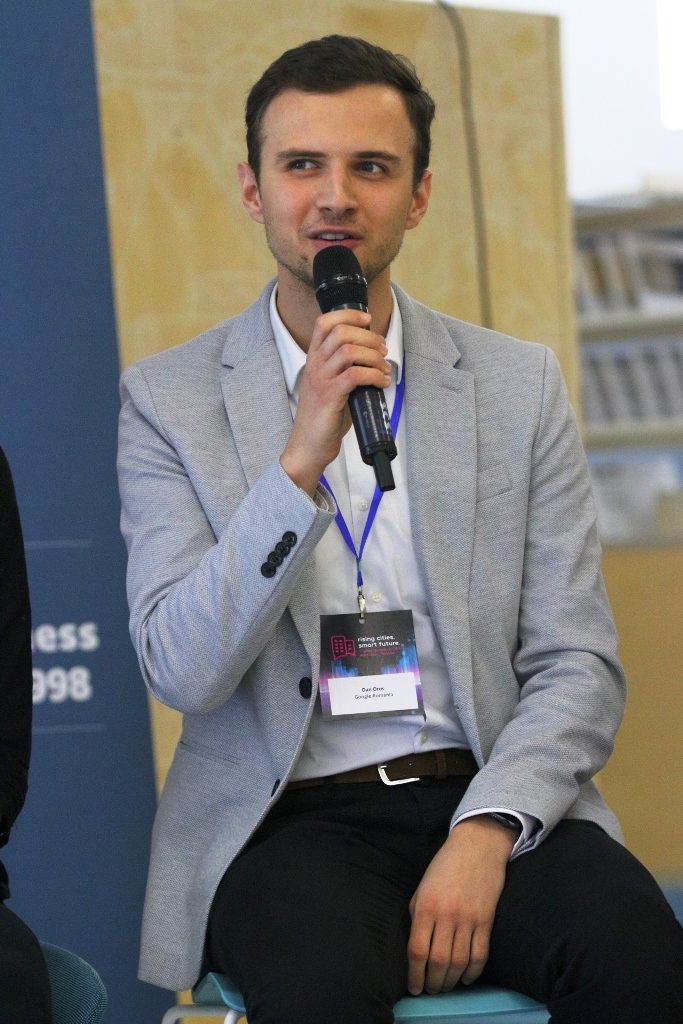
Dan Oros, Marketing Manager, Google Romania
There are over 2 million Romanians using Waze. Waze has a program that can be accessed by authorities to see what the traffic is like and where improvements are needed. Then we have Google Maps, which shows you where everything is. We have the My Company application whereby any businessman can put his business on the map and could also be used by public administrations. It would be ideal to find all the cafes in the city, all the beauty shops, all auto repair shops etc. on the map. It would be a first step before anything to see what a smart city means. It’s a very simple way to develop a better and smarter city. We are willing to work towards these goals with public authorities.
Smart City is about people, about those who live in the cities.
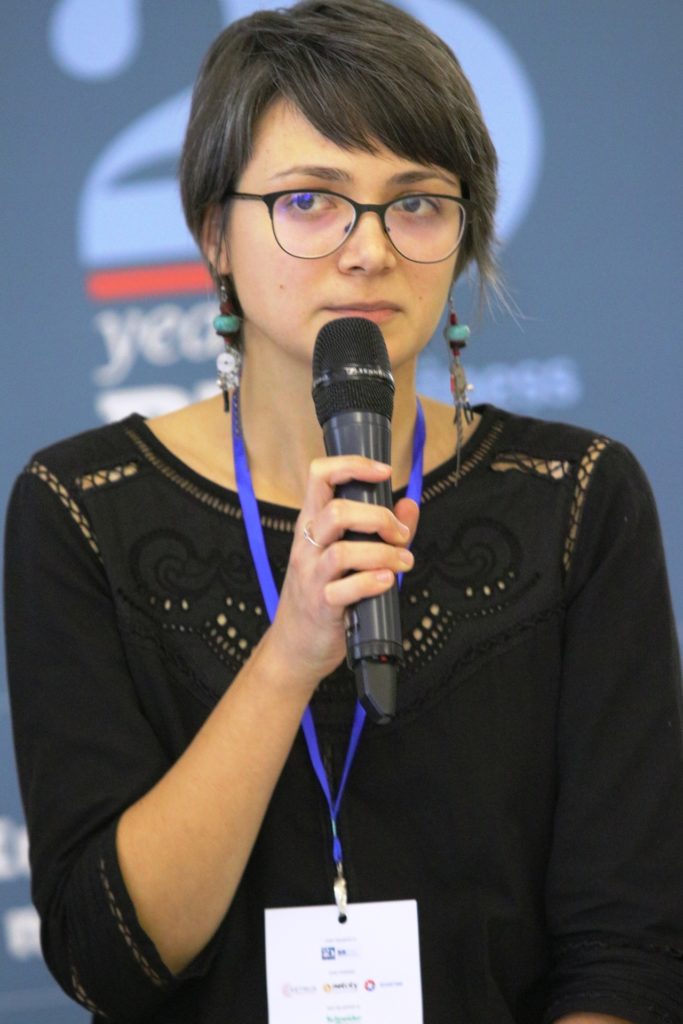
Ana-Maria Elian, Program Director, MKBT: Make Better
We work a lot with the public administration, and in Resita we’ve managed to develop an urban regeneration project. We want to rebuild confidence in public administration, to show that they can do their job well.
Resita is a typical small-medium city case that has lost its main engine of development, the industry. We’ve taken over 300 hectares to see what is the potential to capitalize on. We chose the area with the highest potential as it was set and configured and we started promoting it for investors and developers to find resources.
I also worked hard on urban poverty to identify needs and find resources for solutions – integrated investment resources.
It’s a long-term process, and the results do not follow right away. But it is an example of a “community foundation”.



:quality(80)/business-review.eu/wp-content/uploads/2024/07/SNIPPETS-REALTY-2024_ionut-urecheatu.png)



:quality(80)/business-review.eu/wp-content/uploads/2024/06/22C0420_006.jpg)

:quality(80)/business-review.eu/wp-content/uploads/2024/06/COVER-1-4.jpg)



:quality(80)/business-review.eu/wp-content/uploads/2024/06/br-june-2.jpg)
:quality(50)/business-review.eu/wp-content/uploads/2024/07/VGP-Park-Timisoara_-8thbuilding_iulie-24.jpg)
:quality(50)/business-review.eu/wp-content/uploads/2024/07/America-House-Offices-Bucharest-Fortim-Trusted-Advisors.jpg)
:quality(50)/business-review.eu/wp-content/uploads/2024/07/BeFunky-collage-33-scaled.jpg)